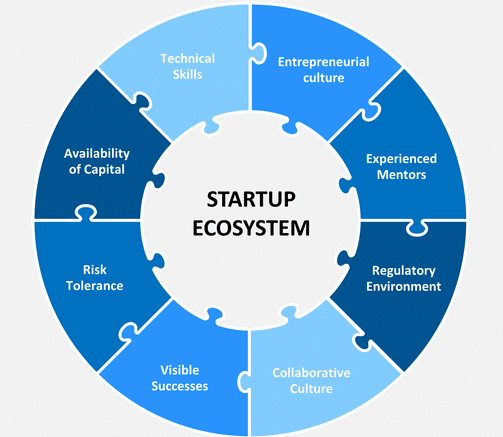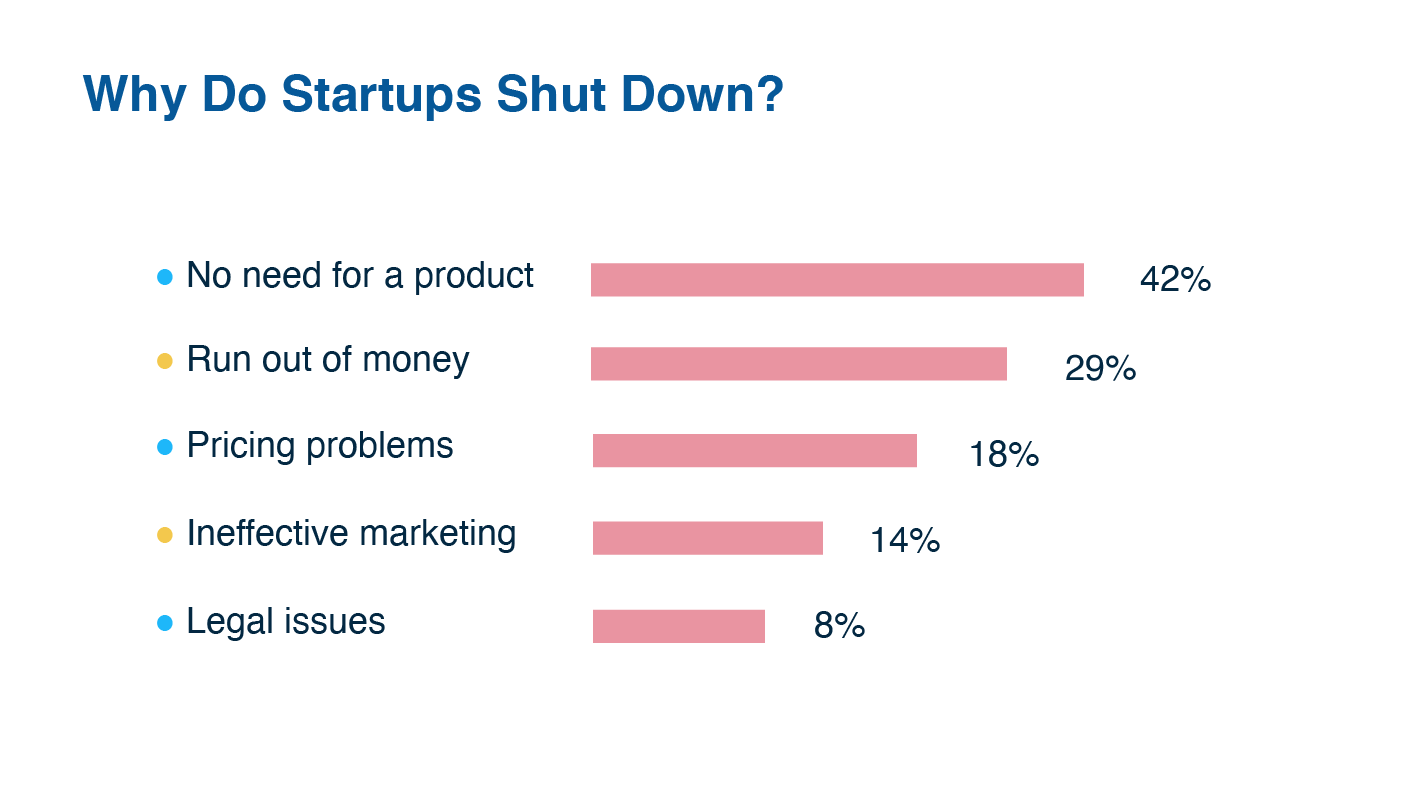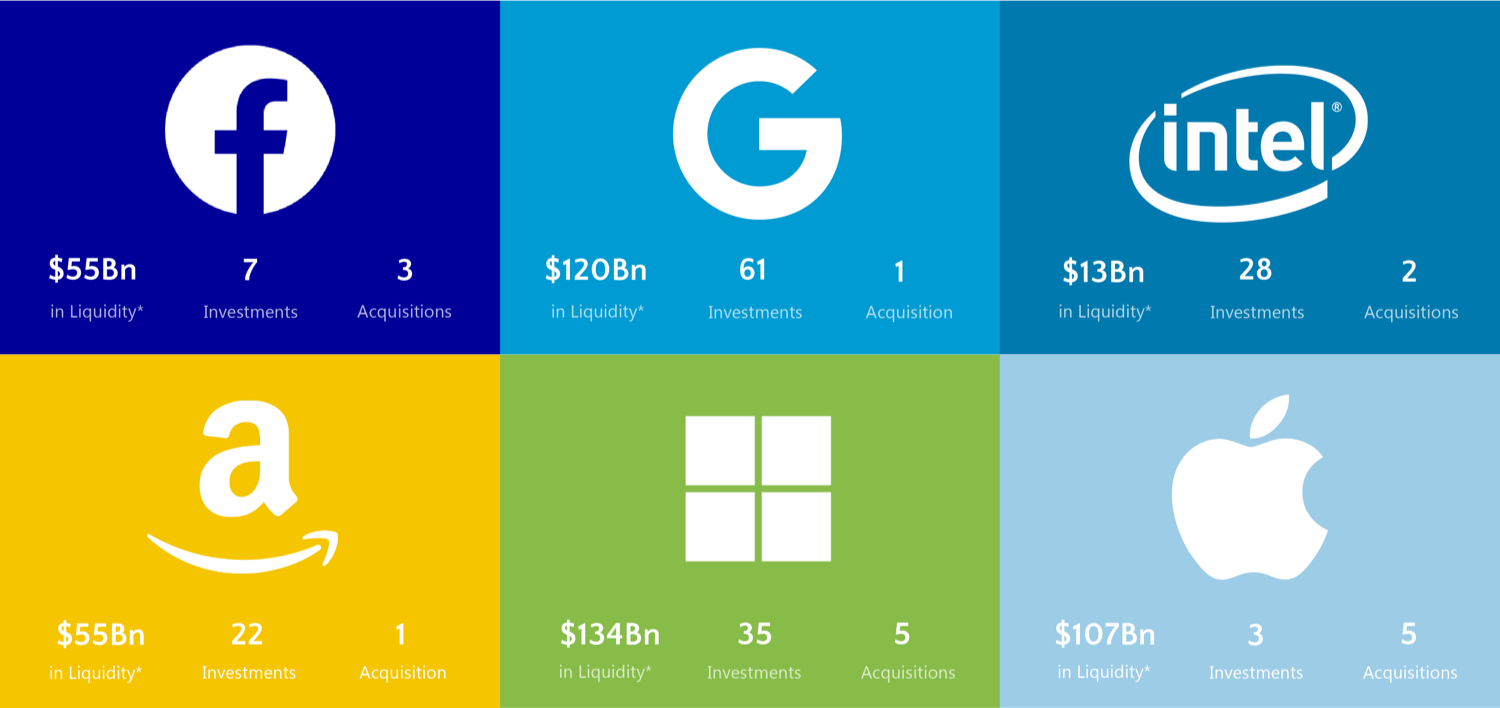
Indian Startup Ecosystem Lacks Innovation, Creativity & Strategy. The Only USP Indian Startup Ecosystem Is Based Upon Is Discount & Cash burn
A startup needs investment, hard work, strategies, and excellent management to make it a prospering business.
India is striving to become the third-largest startup ecosystem across the globe, but it is moving towards unemployment since more and more startups are getting shut down. I.B.M. Institute gave a report for Business Value and Oxford Economics, where they discovered that 90% of the startups in India collapse in the initial five years due to the lack of innovation or too much innovation.
The Discount Strategy That Leads To Incur Huge Losses
Now, the question comes why are startups going under losses and shuts down ultimately?
There is a discount strategy behind this that leads the startups to either incur huge losses or the shutdown situation. The discount strategy is that they provide their services less than the market selling price and don’t generate their own unique selling price. They give services at very low rates.
As a result, they incur huge losses, and if they try to level up the prices, they lose their consumers. In fact, if they try to level up their cost, there is another startup ready to serve the consumers with another set of great discounts. This ultimately leads them to incur losses which are not recovered, and they never come under the profit-making companies.

Case study 1: Swiggy and Zomato
Have you ever wondered what those coupon codes in Swiggy and Zomato are? Those are the discounts given to you by the company. They pay that particular amount from their own pocket. Also, the riders who deliver your food doesn’t get fully paid for petrol and salary from your delivery services. This means that you were paying very fewer delivery charges for the rider and the rest was paid by the company itself. Also, to attract riders for the job the company used to give them incentive opportunities and petrol allowance for deliveries per week.
You must have noticed the Rs 45 delivery fee you are paying to the delivery boy. The price of petrol per litre in Delhi is Rs. 82.02. Now just imagine how much is the cost of the total delivery and the charges you are supposed to pay your rider. The coupon code SWIGGYIT has given us the chance to taste varieties of food from various restaurants. Have you ever thought who is going to pay this amount? Of course, the company. So now calculate the total loss of the company is they are paying from their pockets.
Case Study 2: Paytm and Google Pay
Both the digital UPI wallets offer cashback mostly after the transactions completed using them. The cashback might be of Rs 5 or 10, but they are giving this cashback to millions of people. Paytm even have the cashback policy for the payment of petrol in Delhi by the Paytm wallet.
They pay Rs. 7 on every transaction of Rs. 1000 at the petrol pump. Who is giving you this cashback? The petrol pump? No! The UPI wallet company. Now imagine how many people are buying petrol? Of course millions of people are daily refueling their tanks, and if they are paying from Paytm, then they might be getting the Rs 7 cashback. So now calculate the losses incurred by the UPI wallets in a single day.
Case Study 3: Oyo Rooms and Trivago
Similarly, the Oyo rooms and trivago works on the discount strategy. If you book your hotel stay with them, then you can get a room costing for Rs 2000 at just Rs 1000 or 1500. They pay the rest of the amount to the hotels from their own pocket and then get traps in the losses. This is how they attract people to buy their services.

What is the startup culture?
In the initial stages, startup founders strive to dedicate time to define their culture from the start, only to come to the disturbing recognition that culture absolutely has an impression on the operational front of the business. Seasoned founders and CEOs who consider there is room for culture from the commencement encounter less culture-related pressure as they progress.
We often come across several stages of development and discover that although culture is regarded as necessary, many are uncertain of how to determine it for their own goals. This can be especially challenging when there are fewer than some of the people in the organization.
There are three important elements to identify the culture of your company that includes core values, an aim, and expertise strategy. Likewise, the definition of startup culture can be determined by examining the company:
- Identity,
- Growth Strategy, and
- Relationships
Identity: The startup companies run behinds to make their own existence and identity, and then they get inside the discount trap strategy to get customer acquisition. Also, making your own identity needs a unique product or service. If there is already a lipstick brand, why would people come to your lipstick brand? There should be some bate for them to buy your products and services.
Growth Strategy: Now comes the growth strategy, which is solely dependent on investments and funding. If your company gets enough funds and investments to operate your operations, then you can execute your operations smoothly. Also, many owners dilute their stakes to the investors to acquire funds. Huge investments are required for huge promotions and advertisements. Excellent promotions will automatically attract people.
Relationships and communications: The relationships and communications you form in the market will help you in the long run. It can help in supporting your sustainability and efficient working of your operations. You should have good terms with the people your business is connected with whether they are your employees, transporters, raw material providers or any other. For sustainability and long life, you need to have a good relationship and communication in the market. This will help in creating your goodwill in the market.
Some General Issues That Leads To Startup Failure

1. Frequently it is told that if you make a distinct and out of the box product, your business will meet the sky. So then this proverb is followed, and a very unique product is tracked. Amidst this whole situation, one very essential element is missed, and that is the demand for the product. Startups come up with such a unique product but neglect that those products aren’t demanded and aren’t appropriate for the market.
2. The deficiency of determining the market problem is an added concern. Startups in India have a lot amount of data, great advisors, technology, and a good reputation because of precise marketing. But one problem that predominates is that of market understanding. They do not solve the market problem in general.
3. India is the second-most populated country in the globe and a notable economy; however, most startups only feed to a section of the society and not a large part of it. The population in the rural areas remain untouched by them. In India, there are more limited than twenty retailers to serve the whole market segment. But there survive way too many online retailers for the consumers. Moreover, there are too many startups that exist in a concentrated atmosphere. The increasingly crowded startup ecosystem indicates there aren’t enough funds to go around for each startup. This is a notable challenge that hinders the growth of a startup even when it has all conditions in its support.
4. Another important issue for the decline of startups has been a shortage of talent/ commitment and deficiency of funds. Startups hire unqualified employees and go into the faulty circle of inadequate human personnel for the whole term. Startups were originally not able to collect a skilled workforce due to the restricted resources available and the failure to pay high salaries. There was simply a shortage of skills and qualified talent. In the second case, the founders wasted good two years with the unskilled staff and paid them from the restricted capital they had with negligible returns.
Why The Startup Companies Lose Their Consumers?
In India, people are not brand loyal; they run behind discounts and services at a low cost. Consumers switch up to the company that provides them with huge discounts and excellent services.
When these startup companies try to level up their prices, another startup business comes into existence with new discounts. It offers that lead to cause a switch among the acquired customers of the company.
How Startup Companies Make Their Customer Acquisition?

Startup companies invest a lot in marketing. They try almost every way to market their services and incur hefty expenses on promotions and advertisements. Of course, the discount strategy is a way to attract consumers, but they make many efforts for branding their products and services.
Ultimately they end up acquiring a huge number of customers.
What do All These Startups believe?
These startups execute with losses and work on different motives. They either sustain on investment, and diluting owners share to the investors. They find investors and make them their stakeholders.
They never come in a profit-making state due to their discount strategy.
Why Investors Invest In Loss Making Startups?
- Running for profitability too early often indicates restricting growth. A large consumer base requires to be developed, and analysis requires to be done. Revenue in the beginning step signifies something isn’t accurate.
- If an enterprise capitalist firm concentrates in technology, they will attempt to control the tech sector by purchasing as many companies as possible. This way, their opponents won’t have many alternatives but to buy the continuing less appealing companies. This different strategy can build a positive jump in their portfolios, and usually, the word investment is considered to be more attractive than the concept of profit.
- Investors can still make money from profitless companies. V.C.sV.C.s generally sell their shares and often go ahead with the consolidations and acquisitions.
- There is also another very precise reason, the brand value. So uber isn’t making profits right now, but if a venture capitalist invests in uber, they can make a profit from it because of the popular name of the brand. The startups market themselves in unique techniques and often become more popular than established businesses.
The Main Motive Of Incorporating A Business
What can be the ultimate motive of forming a business or incorporating a startup? Of course, making a profit is the sole concept behind every business. But the startup companies start making losses in initial results, and due to the discount strategy, they never come under profit-making companies. They pay from their pockets to sustain themselves. And if you are not incurring profits, then how can startup business come under the list of multi-million Entrepreneurs?
Another aspect here hits the Big Giants to purchase these loss-making startups. Why would the big giant companies be interested in purchasing a loss-making startup? Has this question ever puzzled you? Yes? Then here is the answer to this question.
Why do Big Giants buy startups?

- The big corporations end up acquiring the startups because of the major reason, price. Rather than obtaining services from them, they end up acquiring the startup so that in the long period, a very successful partnership is established. The whole setup, expertise and technologies are bought. The advantage of two service organization is way more than using the service.
- One of the main reasons for incorporation and purchasing is that acquiring the startup, the sales of the startup join with the parent company’s trades. The more prominent organization has a win-win condition. The important example here can be of Amazon and Kiva. When the firm, Kiva developed robots, Amazon works that in their warehouses for all the in-house procedures.
- N Ganapathy Subramaniam gave a statement that “We resume to continue open and hungry for purchases. We have one of the best track records in terms of purchasing companies and combining them… the approach is that simple, we are in the market scanning for the right asset that will add a particular amount of intellectual property, market extension, or client extension.”
- Another significant reason is a market research and business development. Research practices is a many years procedure. People who start their own enterprises have completed their part of the research. So when a prominent company procures a startup, it ends up buying all the things connected with it in a package along with the excellent and appropriate research beliefs.




